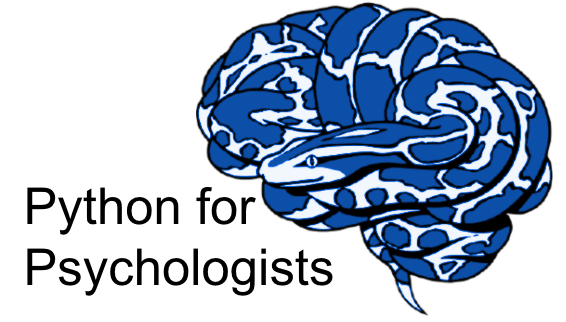General outline
Contents
General outline¶
Within this course, we will talk about and work through the core aspects of using python for a scientific project, i.e. data acquisition and data analyzes.
In order to provide a solid basis for the practical work on these topics, they will be preceded by an in-depth introduction that will introduce and outline central characteristics and functions of the python programming language.
These three defining parts will also be used as cornerstones of the course outline and will entail respective more-detailed subsections.
When and where do we meet?¶
As mentioned in the overview - adapt link section, the course will be held as a blocked seminar. The first meeting on Friday the 28.10.22 from 14.00 (ct?) to 18.00 at the “Seminarhaus” (SH) in room SH 3.105, Theodor-W.-Adorno-Platz 6, 60323, Frankfurt am Main. The following meetings will be held from 10.00 (ct) to 18.00 on the 4.11.22, 5.11.22 and on the 19.11.22 in room SH 3.105.
View Larger Map
Schedule¶
Please see below for our current optimistic schedule. Depending on our progress, potential problems and different forms of learning, content and times might change a bit. Each lecture will be divided into several parts separated by a 5-10 minute break and might constitute a transition from basic to advanced concepts, theoretic to practical sessions and individual to group work. The different parts are roughly indicated in the schedule below like this:
🗓 - important information on date & time
💡 - input from the instructor
👨🏻🏫 - instructor presents content
🥼 - research project work
🧑🏽💻🧑🏾💻 - work on demo data
🧑🏿🔬👩🏻🔬 - work on own research project
🖥️ - computational work outside course hours
✍🏽 - writing outside course hours
📖 - reading outside course hours
Please note that the optimistic schedule below may be subject of change, dependent on time constraints and progress made in the previous meetings.
Date (day/month/year) 🗓 |
Topic 💡 👨🏻🏫 |
Assignment 🖥️ ✍🏽📖 / deadline |
|---|---|---|
28/10/2022 |
Introduction I - course information & setup 💡 👨🏻🏫 |
🖥️ 📖 /not applicable |
28/10/2022 |
Introduction II - GUI/CLI & BASH 💡 👨🏻🏫 🧑🏽💻🧑🏾💻 |
🖥️ 📖 /not applicable |
04/11/2022 |
Introduction III - computing environments 💡 👨🏻🏫 🧑🏽💻🧑🏾💻 |
🖥️ 📖 / 14/11/2021, 11:59 PM EST |
04/11/2022 |
Introduction IV - jupyter ecosystem/notebooks 💡 👨🏻🏫 🧑🏽💻🧑🏾💻 |
🖥️ 📖 / 14/11/2021, 11:59 PM EST |
04/11/2022 |
Python I - basics & data types I 💡 👨🏻🏫 🧑🏽💻🧑🏾💻 |
🖥️ ✍🏽📖 / 03/12/2021, 11:59 PM EST |
04/11/2022 |
Python II - basics & data types II 💡 👨🏻🏫 🧑🏽💻🧑🏾💻 |
🖥️ ✍🏽📖 / 03/12/2021, 11:59 PM EST |
05/11/2022 |
Python III - control flow operations 💡 👨🏻🏫 🧑🏽💻🧑🏾💻 |
🖥️ ✍🏽📖 / 17/12/2021, 11:59 PM EST |
19/11/2022 |
PsychoPy I - writing experiments in python 💡 👨🏻🏫 🧑🏽💻🧑🏾💻 🧑🏿🔬👩🏻🔬 |
🖥️ ✍🏽📖 / ? |
19/11/2022 |
PsychoPy II - stimulus presentation & responses 💡 👨🏻🏫 🧑🏽💻🧑🏾💻 🧑🏿🔬👩🏻🔬 |
🖥️ ✍🏽📖 / ? |
(19/11/2022) |
(Data analyses I - data handling) 💡 👨🏻🏫 🧑🏽💻🧑🏾💻 🧑🏿🔬👩🏻🔬 |
🖥️ ✍🏽📖 |
(19/11/2022) |
(Data analyses II - statistics & visualization) 💡 👨🏻🏫 🧑🏽💻🧑🏾💻 🧑🏿🔬👩🏻🔬 |
🖥️ ✍🏽📖 / ? |
